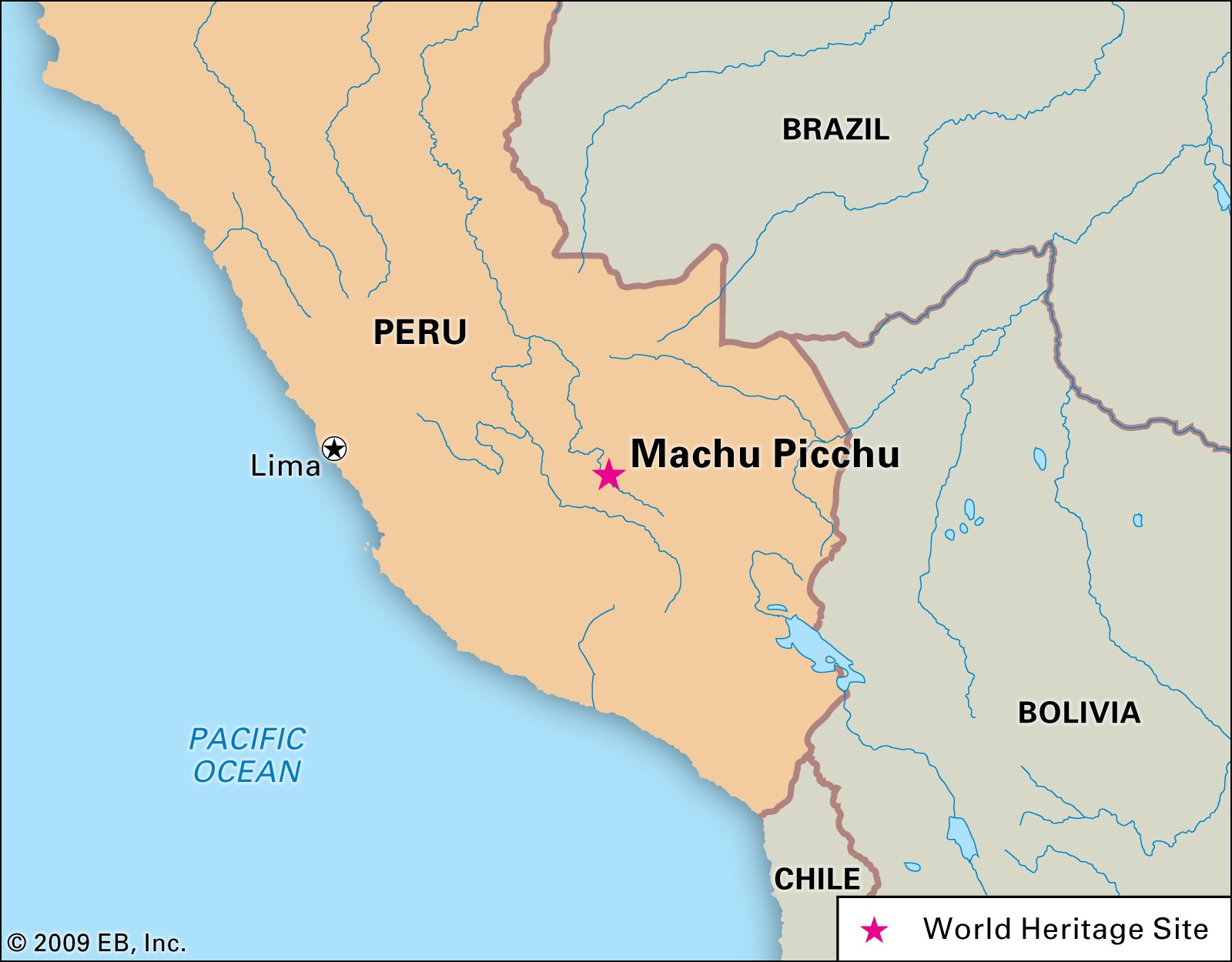Machu Picchu, an iconic symbol of the Inca civilization, stands as a testament to their architectural prowess and connection with the natural world. But What Is Machu Picchu beyond a stunning archaeological site? It’s a window into a bygone era, shrouded in mystery and captivating the imagination of millions.
A Citadel in the Clouds: Location and Setting
Nestled high in the Andes Mountains, about 50 miles (80 km) northwest of Cuzco, Peru, Machu Picchu graces the Cordillera de Vilcabamba. Its strategic position, perched at an elevation of 7,710 feet (2,350 metres) on a narrow saddle between the Machu Picchu (“Old Peak”) and Huayna Picchu (“New Peak”) peaks, overlooks the Urubamba River valley. This remote location likely contributed to its preservation, allowing it to remain largely intact for centuries.
Rediscovery and Recognition: From Obscurity to World Heritage
While the Spanish conquistadors never discovered Machu Picchu, it may have been visited by German adventurer Augusto Berns in 1867. However, it wasn’t until 1911 that the Western world became aware of its existence, thanks to Yale University professor Hiram Bingham. Guided by a local Quechua resident, Melchor Arteaga, Bingham stumbled upon the site while searching for Vilcabamba, the “lost city of the Incas.” Initially, Bingham believed Machu Picchu was Vilcabamba, a claim later disproven.
In 1983, Machu Picchu’s significance was officially recognized when it was designated a UNESCO World Heritage site, solidifying its place as a cultural treasure. It was further celebrated in 2007 as one of the New Seven Wonders of the World, drawing even greater attention and tourism.
Unraveling the Purpose: A Royal Retreat?
Excavations and research have provided insights into the potential function of Machu Picchu. Built between the mid-15th and early 16th centuries, its construction style suggests it served as a palace complex for the Inca ruler Pachacuti Inca Yupanqui (reigned c. 1438–71).
Early theories proposed it was a sanctuary for the Virgins of the Sun, an elite Inca group, based on the initial misidentification of skeletons found at the site as predominantly female. However, modern technology has revealed a more diverse population, leading scholars to believe Machu Picchu functioned as a royal retreat. The reasons for its abandonment remain unclear, although a shortage of water may have contributed.
Architectural Marvels: Stepped Terraces and Sacred Spaces
The intricate design and high level of preservation at Machu Picchu are truly remarkable. Dozens of stepped agricultural terraces, once irrigated by an aqueduct system, surround the southern, eastern, and western sections of the site. These terraces provided sustenance for the inhabitants and demonstrate the Inca’s advanced agricultural techniques.
Walkways and thousands of steps, crafted from stone blocks and footholds carved into the bedrock, connect the various areas, including plazas, residential zones, terraces, and major buildings. Key architectural features include:
- The Main Plaza: A central gathering space divided by wide terraces.
- The Sacred Rock (Temple of the Sun): Featuring an inclined rock mass with a small grotto and a horseshoe-shaped enclosure known as the Military Tower.
- The Temple of the Three Windows: A hall with three trapezoidal windows showcasing Inca architectural ingenuity.
- The Intihuatana (Hitching Post of the Sun): A uniquely preserved ceremonial sundial.
- The Princess’s Palace: A bi-level structure with highly crafted stonework.
- The Palace of the Inca: A complex of rooms with niched walls and a courtyard.
- The Inca Bridge: A rope structure spanning the Urubamba River.
A Thriving Tourist Destination: Experiencing Machu Picchu Today
Today, Machu Picchu stands as the most significant tourist attraction in Peru, drawing visitors from across the globe. Most travelers arrive on a day trip from Cuzco, taking a train and then a bus up a serpentine road. Others choose to hike the Inca Trail, a multi-day trek through stunning scenery and Inca ruins.
Conclusion: More Than Just Ruins
So, what is Machu Picchu? It’s more than just a collection of ancient ruins. It’s a historical treasure, an architectural wonder, and a testament to the ingenuity and cultural richness of the Inca civilization. As a premier tourist destination, Machu Picchu continues to inspire awe and wonder, offering a glimpse into a fascinating past and prompting ongoing research and preservation efforts. Plan your visit to Machu Picchu and witness the splendor for yourself!
